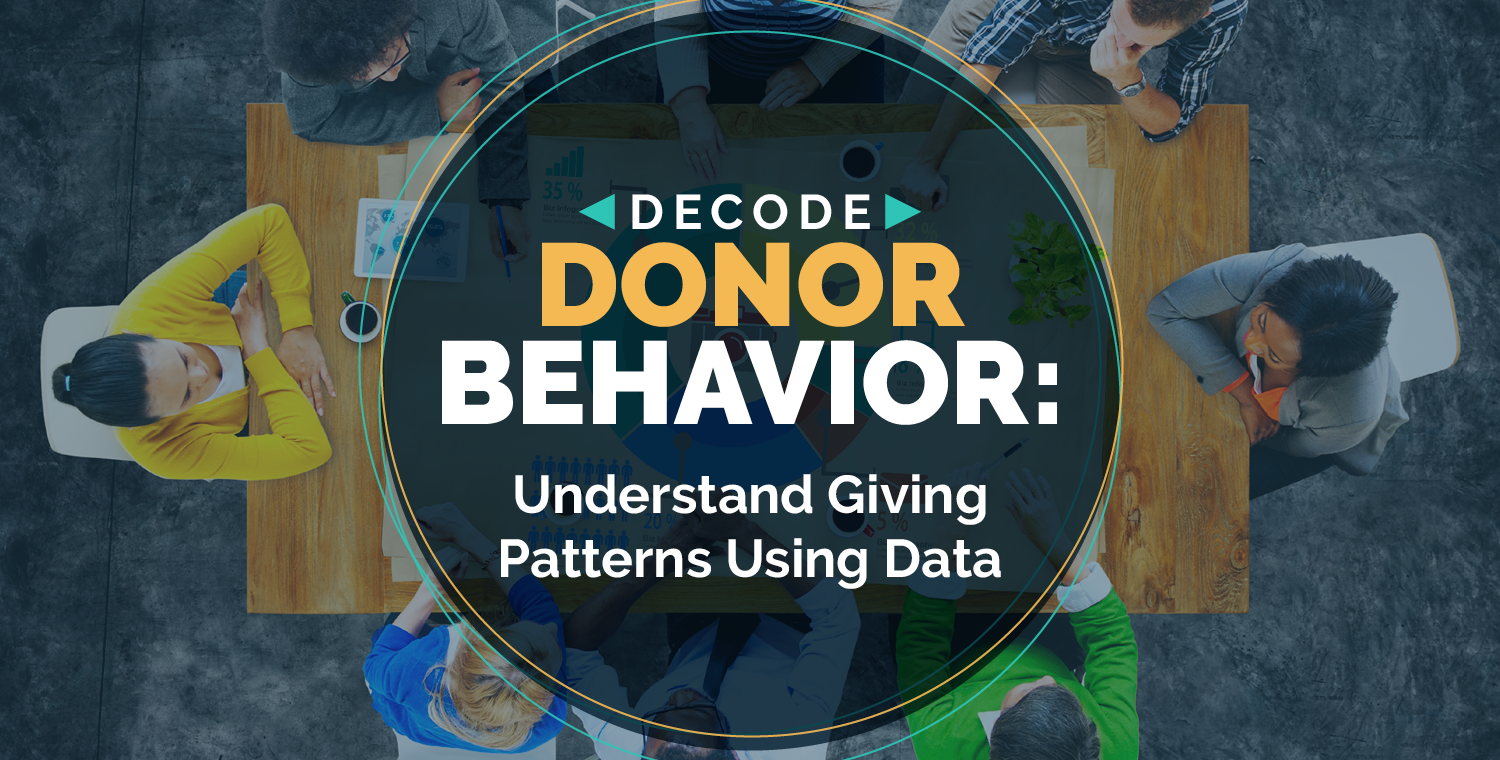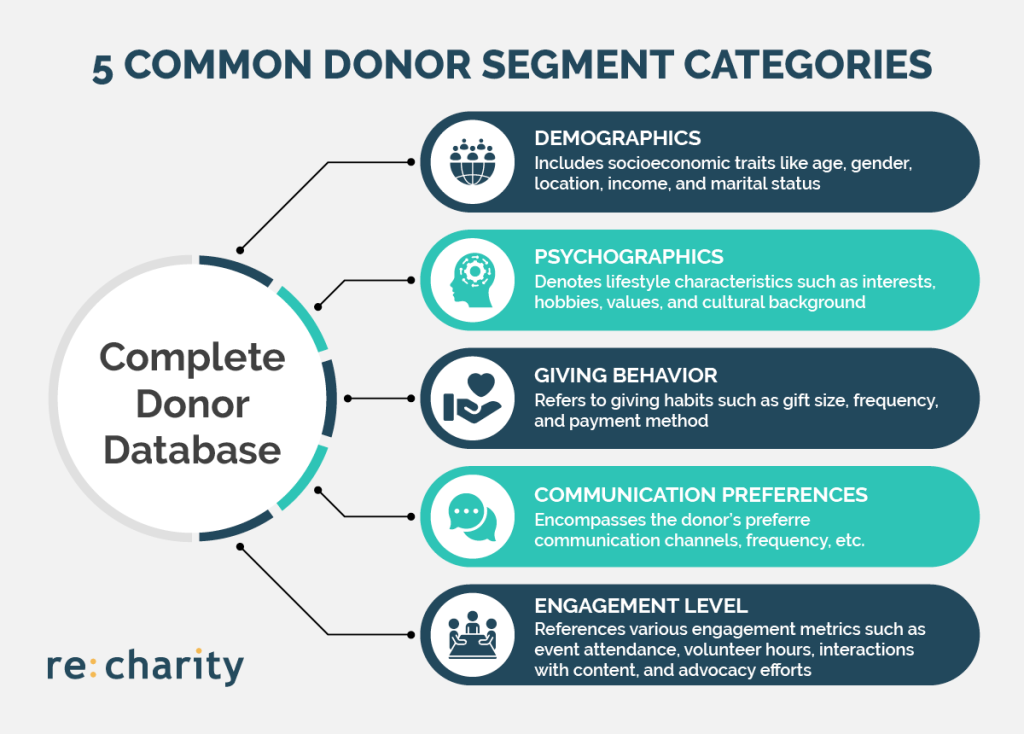
Most fundraisers would agree that creating an effective campaign is a challenge. The process involves so many moving parts, from selecting communication channels to identifying top prospects—and all of these pieces are essential to secure the revenue your nonprofit needs. But without the right information, making decisions about your fundraising strategies and donor communications can feel like guesswork.
So, how can nonprofits find direction in their campaigns and build personal connections with supporters that inspire them to give? The answer is simple: rely on your donor data to create data-driven campaigns.
While your nonprofit may already use data in some way, 77% of organizations report feeling like they underutilize this valuable tool and miss out on key fundraising opportunities. In this guide, we’ll cover the steps your nonprofit can take to approach data analysis with confidence and uncover the donor insights waiting in your database:
- Use fundraising analytics software.
- Take a holistic approach.
- Leverage donor segmentation.
- Use data to personalize communications.
Now, you might be thinking about your database and its hundreds (or even thousands) of data points, wondering where to start. To help you out, we’ll explore the ways that fundraising analytics software can organize your data. Let’s get started!
Use fundraising analytics software.
Fundraising analytics software is designed to help nonprofits analyze and visualize their data in order to gain insights, better understand donors’ behavior, and boost their fundraising results. This software makes working with your donor data much easier than relying on more cumbersome tools like spreadsheets, creating custom reports and graphics in just a few clicks.
Additionally, these tools can provide insights into your donors’ wealth indicators, such as net worth, stock and real estate holdings, and business affiliations. According to GivingDNA’s guide to wealth screening, these factors are essential to measuring your donors’ capacity to give to your cause so you can identify the best prospects for your campaigns.
The guide also lays out some of the key features you should look for when choosing a fundraising analytics tool, including:
- A visualized, dynamic interface
- Interactive, easy-to-understand dashboards
- Insights about donors’ behaviors, discretionary income, and philanthropic affinities
- Prospect identification
- Segmentation capabilities
When you have a more complete picture of donors’ giving personalities and why they make the decision to give to charitable causes, you’ll fundraise more effectively. If your organization can accurately estimate a donor’s giving capacity, you can then create fundraising appeals that align with their unique situation.
Take a holistic approach.
For the best fundraising results, you need to go beyond simply analyzing your donors’ average gift size, frequency, and yearly income. While metrics like these are important, they can also be misleading and cause you to miss key fundraising opportunities. Instead, try analyzing other giving and spending behaviors, branch out to other demographic data points, and see if they’ve gotten involved with your organization in other ways, such as volunteering or engagement with mobile giving tools at events.
For example, let’s say you are looking at two different donor prospects:
- Donor A gives a gift of $1,000 once per year around the holidays and has a yearly income of roughly $150,000.
- Donor B, on the other hand, donates $100 every quarter and has a yearly salary of $75,000.
At first glance, you may think that it’s best to invest more time and energy into stewarding Donor A who has a higher income and donates $600 more per year than Donor B.
But when you look closer, you see that Donor A rarely engages with your communications, does not volunteer or attend events, and has not been responsive to conversations about upgrades in the past. Donor B, on the other hand, subscribes to your newsletter, volunteers twice a month, and has shown interest in joining your sustainer program. While Donor B doesn’t give as much as Donor A, their consistent engagement will likely amount to a higher lifetime value than Donor A’s.
Peel back the layers of your donor data to go beyond simple, surface-level metrics and determine donors’ potential for long-term support. Start with information like donors’ discretionary spending, engagement with your nonprofit, attendance at events, and participation in volunteer programs.
Leverage donor segmentation.
Prioritizing data hygiene helps make your database more manageable and ensures that your results are accurate and up-to-date. Similarly, categorizing donors breaks your database into smaller pieces that are easier to work with.
These categories, called donor segments, are simply groups of donors who share similar characteristics, such as their income, average gift amount, etc. These segments can be based on any traits or behaviors that will help your nonprofit fundraise more effectively.
Here are five categories your nonprofit can use during the donor segmentation process:
- Demographics: Socioeconomic traits, including their generation, gender, geographic location, income, and more.
- Psychographics: Lifestyle characteristics like the donor’s interests, hobbies, and values.
- Giving behavior: Giving habits such as average gift size, gift frequency and recency, and method.
- Communication preferences: The way donors communicate, including the channels they use most, when they engage, and their average response rate.
- Engagement level: Includes event attendance, time spent volunteering, and engagement with communications.
While these categories are incredibly useful, focusing too heavily on segmentation can cause you to miss broader patterns in your data. For example, giving might be holding strong among your major donors but consistently decreasing among those who give small and mid-level donations. Continue studying donor segments, but remember to frequently track trends using a complete, unfiltered version of your file.
Use insights to personalize communications.
In addition to helping your nonprofit better understand donors’ giving behaviors and motivations, these data insights help you foster deeper donor relationships. Leverage the data you have about your donors to craft personalized communications, showing that you care to take the time to learn about them.
Specifically, you can use data to shape messages to donors like:
- Thank-you messages. eCardWidget’s guide to donor thank-you messages explains that thanking donors in personal, authentic ways will help you retain more supporters and inspire them to give again. Use what you know about donors to greet them by name, reference the specific gift you are thanking them for, highlight other ways they support your nonprofit’s mission, and tell them about the impact their gift will have.
- Marketing emails. Personalization is an important part of marketing, and your data analysis can help you tailor your messages to donors’ preferences. Communicate via their preferred channels and promote events, programs, and engagement opportunities that align with their interests.
- Requests to join other opportunities. Based on the events supporters have attended, volunteer experience, or gifts they’ve made to certain programs and initiatives, send donors personalized messages about other ways to get involved. For example, if the supporter often gives in-kind donations to the food pantry at your women’s and children’s shelter, they may also be interested in donating gifts and necessities to children during the holiday season.
The more you can customize your donor communications, the more donors will feel like valued members of your team. Continue to look for new ways to leverage your data to foster personal relationships with your supporters.
Analyzing your donor data reveals new insights and opportunities that can amplify the results of your fundraisers. When you have a deep understanding of who your donors are, how their backgrounds affect giving behaviors, their motivations for giving, and what about your mission excites them, you can foster authentic relationships. These connections make donors feel fulfilled, inspiring them to continue fueling your nonprofit’s work for years to come.
